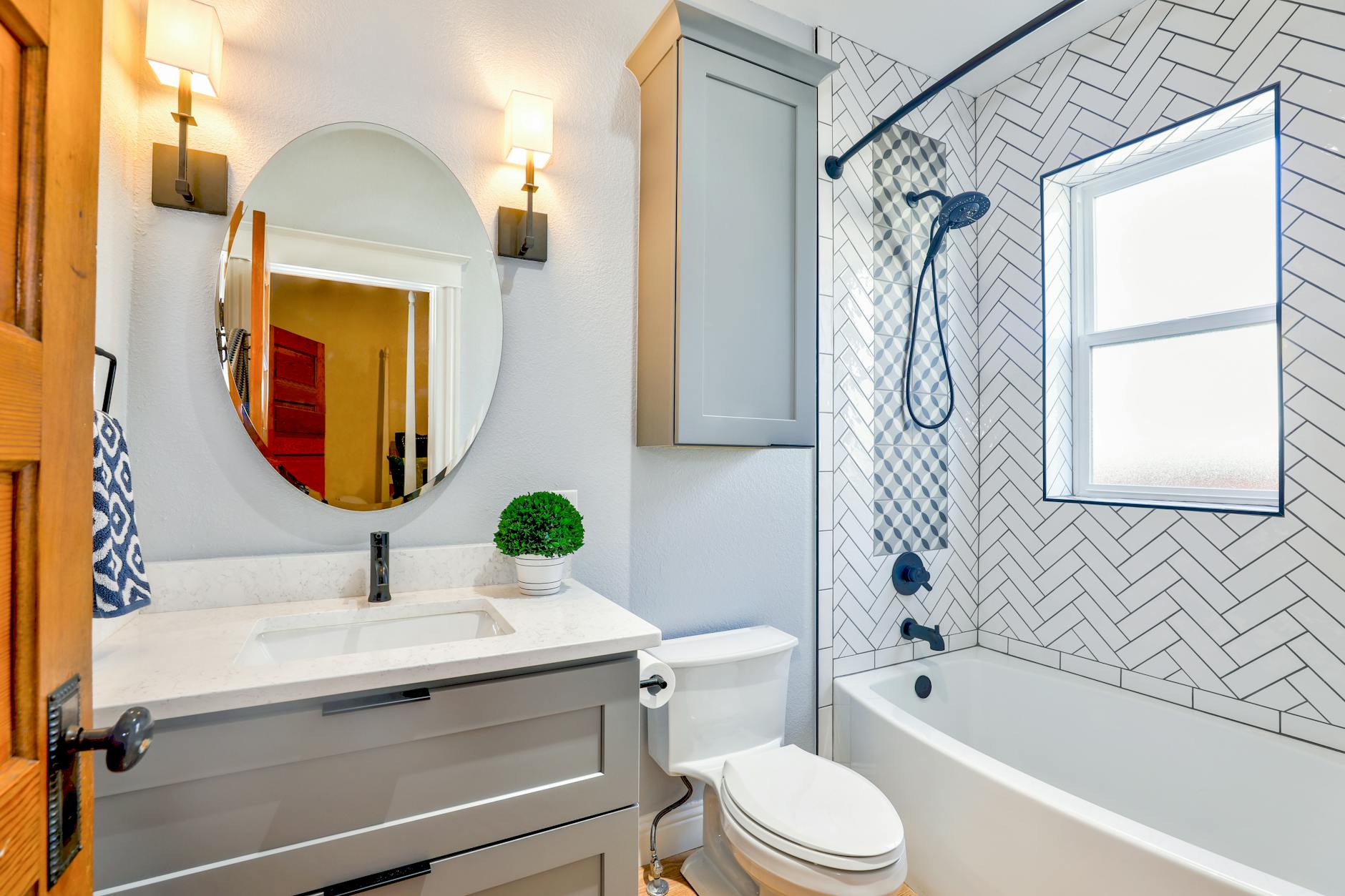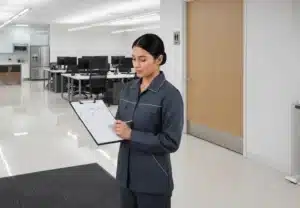
How We Maintain Government Facilities: A Walkthrough
See how government facility cleaning works—security, onboarding, QA, green cleaning, and communication—step by step.

These five field-tested moves keep restrooms looking (and smelling) guest-ready while protecting finishes and safety. Use the quick checklist and product notes below to standardize results across shifts.
Dirt and soap films block disinfectants. First remove soils with detergent and water, then—where policy or risk calls for it—apply an EPA-registered disinfectant to hard, non-porous surfaces (sinks, faucets, counters, handles) and honor the label’s contact time.
“Spray and wipe” is not disinfection. Leave the surface visibly wet for the full time on the label, then rinse food-contact areas if the label requires it. Match products to surfaces (e.g., glass, glazed tile/porcelain, sealed stone/solid surfaces).
On compatible fixtures and tile, use a bathroom cleaner labeled for removing hard water and soap scum. Always pre-test in an inconspicuous area, rinse thoroughly, and never mix cleaners. Keep the room ventilated while using chemicals.
Moisture and tracked soils create slip risks and odors. Use walk-off mats at entrances, spot-mop promptly, and increase attention during wet weather or high traffic.
Run exhaust fans during and after use, fix leaks fast, and dry wet areas within 24–48 hours. The key to mildew control is moisture control.
No. Clean routinely; disinfect high-touch, non-porous surfaces when someone is sick, during outbreaks, or if your policy requires it—always after cleaning.
Glazed tile, porcelain, stainless, sealed solid-surface and sealed wood are common examples. Check your product label to confirm approved surfaces and any required rinse on food-contact areas.
Ventilate during/after use, fix leaks promptly, and dry wet areas within 24–48 hours. Moisture control is the foundation of mold prevention.

See how government facility cleaning works—security, onboarding, QA, green cleaning, and communication—step by step.

Understand the difference between vehicle detailing and facility janitorial for dealerships—who does what, where, and when—plus how to coordinate both.

Use this practical, copy-ready schedule to keep workspaces healthy, presentable, and low-maintenance. Align daily touch-ups with weekly resets and monthly deep care to prevent build-up, protect flooring, and reduce complaints.

When facility operations run smoothly, your team can focus on what matters most. The right janitorial partner doesn’t just “clean the building”—they protect your brand, occupant health, and long-term asset value through responsive, service-first partnerships.